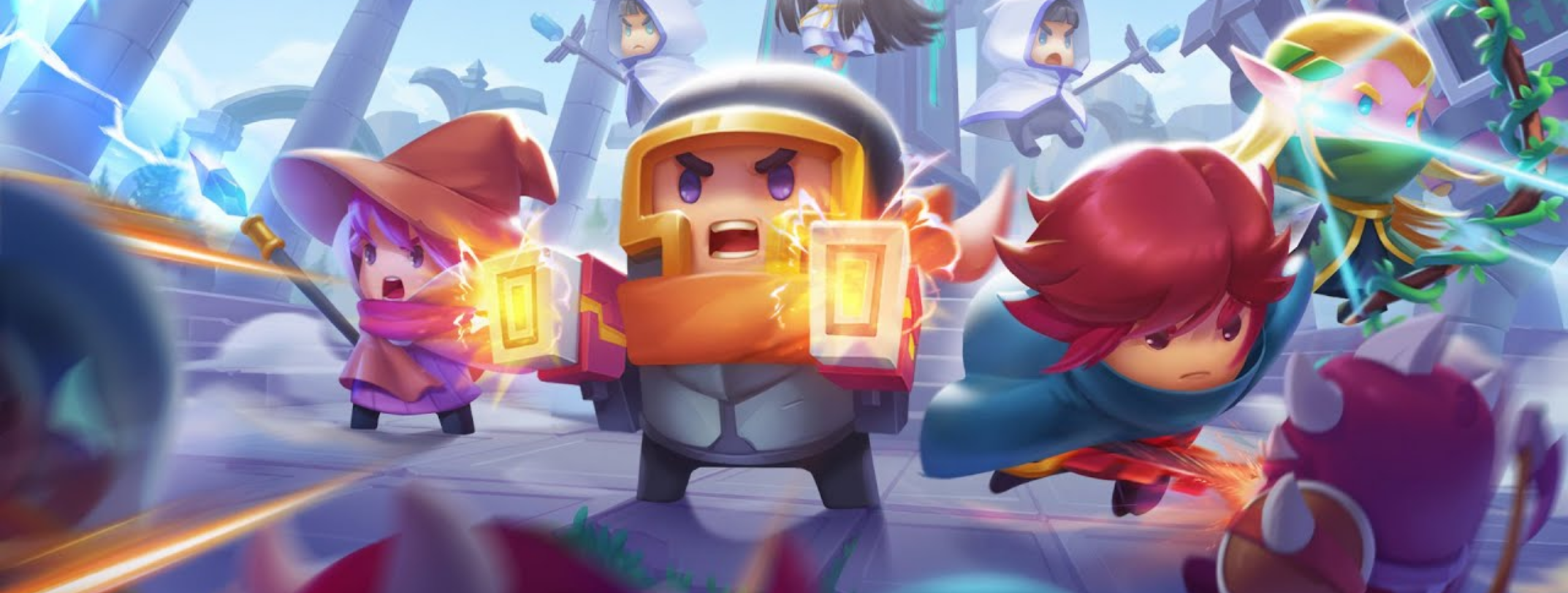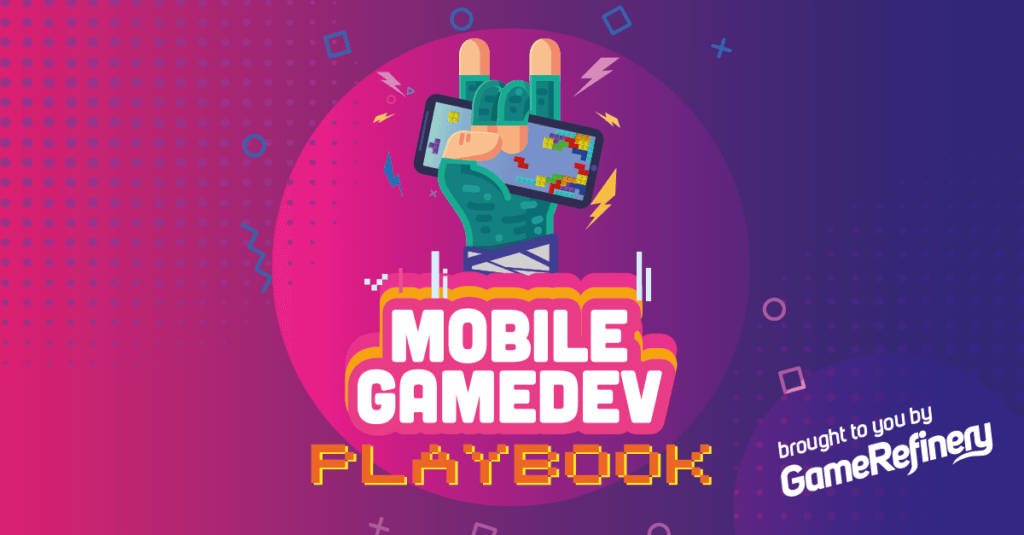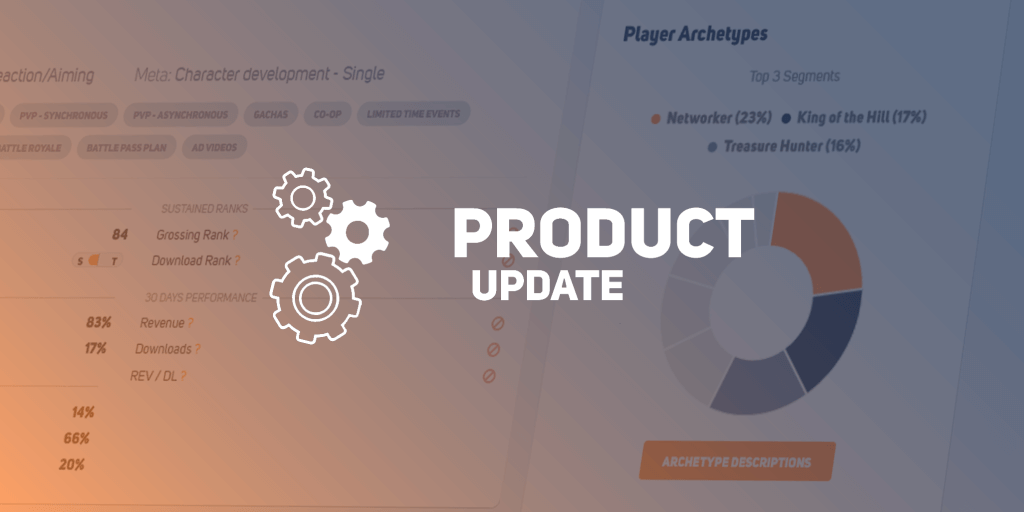“Roguelike” was definitely a buzzword among game developers last year in China, and the shockwaves made by the boom can still be felt today – for example, still in May 2022, we spotted three new games that claimed to be “roguelike” entering the Chinese iOS top-grossing top 200 list. However, a closer inspection revealed that only one of them could perhaps be called a roguelike by some definition, another one seemed to be utilizing just some roguelike elements, and the third one had nothing to do with roguelike at all.
This kind of unwarranted use of the term in-game descriptions and media articles has been rife lately – it seems that pretty much any kind of random element in gameplay is described as “roguelike” nowadays. Therefore, to correct this terrible misuse of the term, we will look at what “roguelike” or “roguelite” or even “Rogue” actually mean, as well as diving into some concrete examples of how roguelike elements and mechanics have been used in mobile games in China lately.
So what is Rogue, “roguelike” and “roguelite”?
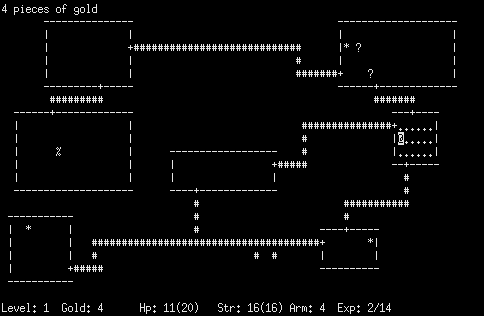
The original Rogue game was a freely distributed turn-based dungeon-crawler role-playing video game developed in 1980 for Unix-based computers. Although it was not the first dungeon-crawler game at the time, it became so influential that it gave birth to a whole new type of RPGs called “roguelike.”
The goal for the player in Rogue was simply to explore a grid-based dungeon starting from the top, retrieve an amulet from the bottom level, and return to the surface. The gist of Rogue was the features that came to define the whole roguelike style of RPGs: permadeath and procedurally generated levels. While exploring the dungeon, the player would find equipment items similar to those in Dungeons & Dragons, which would help them on their journey to the bottom of the dungeon. One dungeon run typically took quite a long time, so the player could save the game and continue playing at another time. However, if the player died, they would have to start over from the beginning with a fresh character all over again. But since the levels of the game were procedurally generated, each attempt at the game would be completely different. As the player advanced through the dungeon room by room and level by level, the enemies they encountered became stronger and stronger. Sounds a lot like a tabletop RPG, right?
Therefore, the term “roguelike” means a game that is similar to the original Rogue, so by definition, it is a turn-based grid-based dungeon-crawler RPG with permadeath and procedurally generated levels. This means there are currently no true roguelike games on the top-grossing charts for mobile games (at least on iOS). That would be way too hardcore to survive long on the top of the charts (it’s a popularity contest, after all), but also because there are certain limitations to monetization in this genre originating from the game mechanics. However, what you can find from time to time are rogue-LITE games, for example, Archero (and its clones), whose makers finally figured out in 2019 how to make some money with this type of game on mobile.
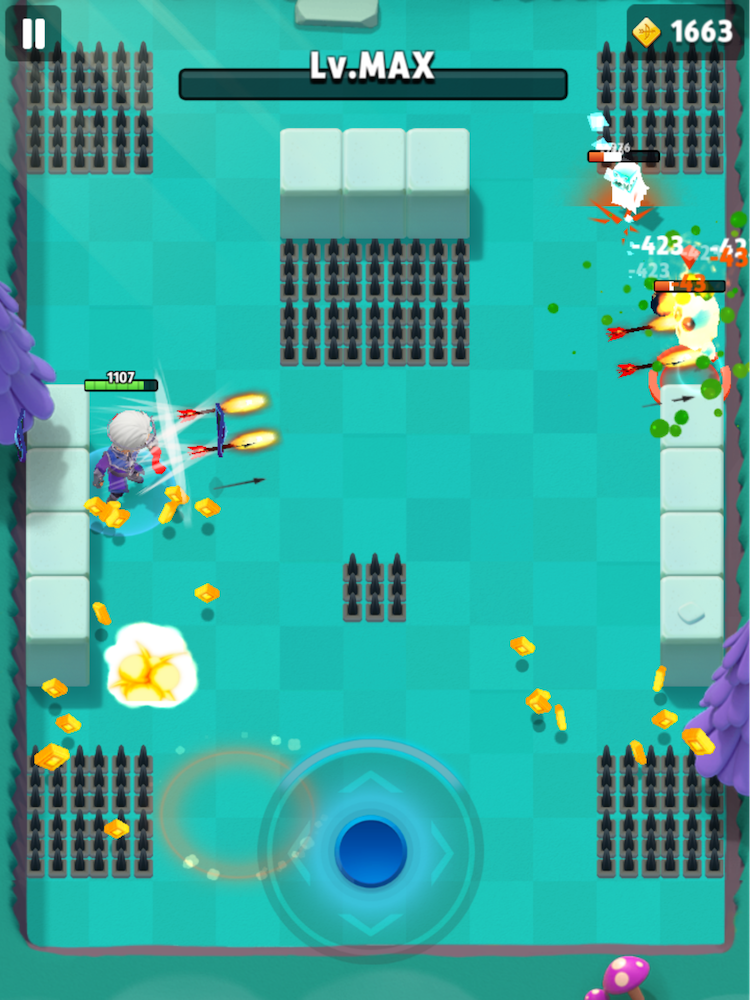
Roguelite (or even “roguelike-like”) refers to games that have been inspired by roguelike games but retain only some of the characteristic features of the genre, usually permadeath and randomized level design. Roguelite games are more casual, concentrating on short sessions and easier gameplay, hence the name “rogue-LITE.” Roguelite games usually differ from roguelikes also by the fact that their core gameplay mechanic is not that of a turn-based RPG but, e.g., that of the more fast-paced action RPG or shoot/beat ’em up game.
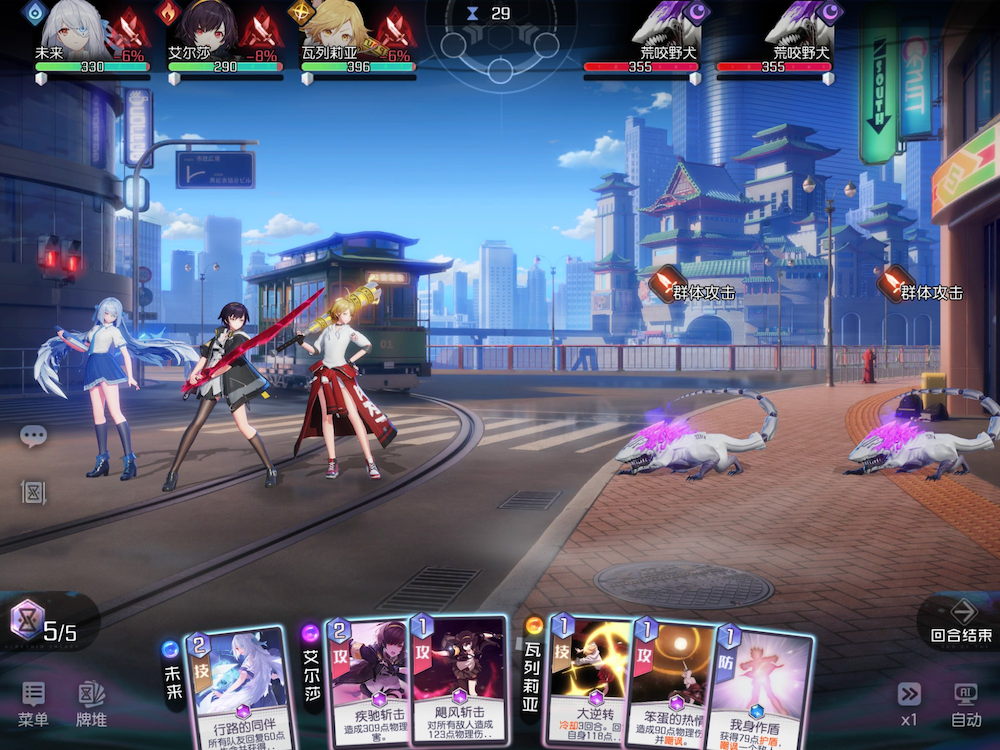
There have been many cases in China where mobile games that are not roguelike, or even roguelite, were called roguelike just because it was a marketing buzzword, especially in 2021 and still continuing to this day. One of these cases involved the Harry Potter: Magic Awakened game (哈利波特:魔法觉醒), which included one game mode with randomly generated levels (see this blog post for a full deconstruction of the game). In that particular case, it could be warranted to say that the game featured “roguelike elements,” but in other cases, the buzzword was used to describe almost any kind of random element in the design of a game, for example, in the case of the (now killed) Netease turn-based RPG Unknown Future (黑潮之上), “roguelike” was used to describe the game because it had a randomized card deck system in the style of any card battler game you can think of.
“Proper” roguelite games that made it to the charts
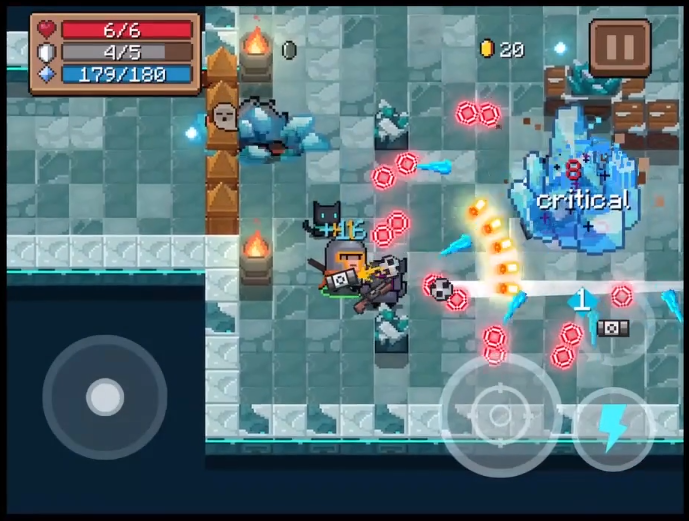
The first “proper” roguelite game that made it to the top 200 of the Chinese iOS top-grossing charts in recent years was Soul Knight (元气骑士), which is a very clear example of a roguelite game – a dungeon crawler shoot ’em up game with retro pixel graphics, a catchy chiptune soundtrack, procedurally generated levels, and permadeath. The game was released already in 2017 (two years before Archero) and made it to the Chinese iOS top-grossing 200 for the first time in 2018.
Soul Knight has been doing rather well on the download charts ever since – regularly appearing in the top 50 even at the time of writing in May 2022, as well as making sporadic appearances in the top-grossing charts every now and then. The game is more focused on quality gameplay than monetization, which is reflected in its low all-time revenue per download rate. Although, to be fair, it has risen steadily from 0.15 USD in the very beginning to 0.66 USD today, while the download rates are still as high as ever. The basics of the game have remained more or less the same, with only small additions of decorative items and other monetization content added into the game later on. In addition, the game also monetizes with incentivized ads. Speaking to the quality of the game, Soul Knight was also released as a premium game for Nintendo Switch in 2019.
So how does it work then? Soul Knight’s gameplay consists of exploring a dungeon with your character, shooting or slashing through hordes of enemies while evading their attacks, and searching for valuable loot as well as items that help you survive longer in the dungeon. And in true roguelite fashion, there is only “one” dungeon, but each dungeon run is a unique experience with randomized level design, and when your character dies, it’s game over. Between levels, the player can choose between three different randomized skills that will be active for the rest of that individual dungeon run, similar to the skill system in Archero.
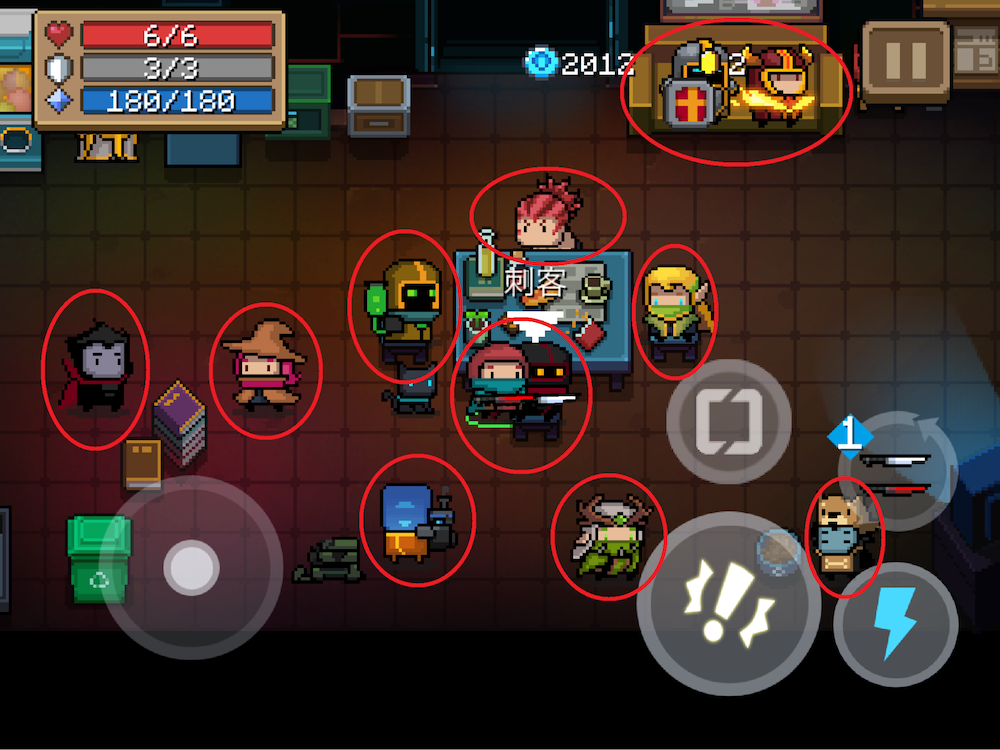
Soul Knight does have long-term progression as well in many different forms. These are all visually displayed in a house that works as the start menu of the game. For starters, there are more than a dozen different playable characters with different stats and skills that the player can unlock and upgrade for a slight advantage. These characters can be seen sitting around the house when not in use. There are also dozens of collectible pets, which can follow and help the player in the dungeon one at a time. In the dungeon, the player can find material items, which can be used to unlock furniture for the house that provides permanent buffs, as well as materials for craftable weapons to use on your next dungeon run. Furthermore, the player can also craft powerful mecha suits for a really significant boost to their next attempt at finishing the dungeon. Outside the house, there is also a vegetable garden where you can plant seeds that grow into plants that provide different one-time consumable boosts.
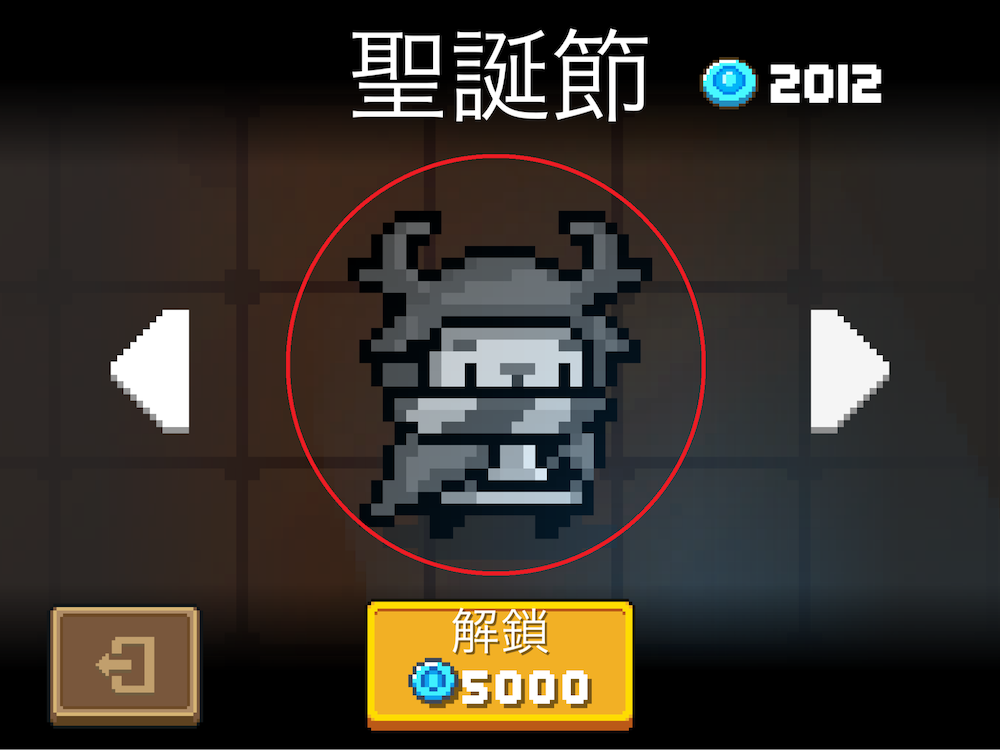
Soul Knight monetizes with all of the above things and more. Characters can be unlocked with either premium currency or real money, and so can pets. Unlocking new furniture and vegetable patches requires premium currency (which can be earned in small amounts from gameplay). Permanent character upgrades require premium currency as well. Also, there are dozens of skins for the characters, which can be unlocked either with premium currency or real money. In a run-of-the-mill roguelite game decorative items such as skins probably would not be a very effective monetization tactic since roguelites and roguelikes are by default single-player games, but Soul Knight has tackled this problem with a synchronous co-op possibility. Random weapons, skins, and material items can also be purchased from traders in the house with premium currency. Before the player enters the dungeon, they can try their luck with the gacha machine and see what kind of weapon they get for a small payment of premium currency. And after dying in the dungeon, the player can either pay a small fee to be revived once. The player can also buy a permanent free revive card with real currency for a free revival once per dungeon.
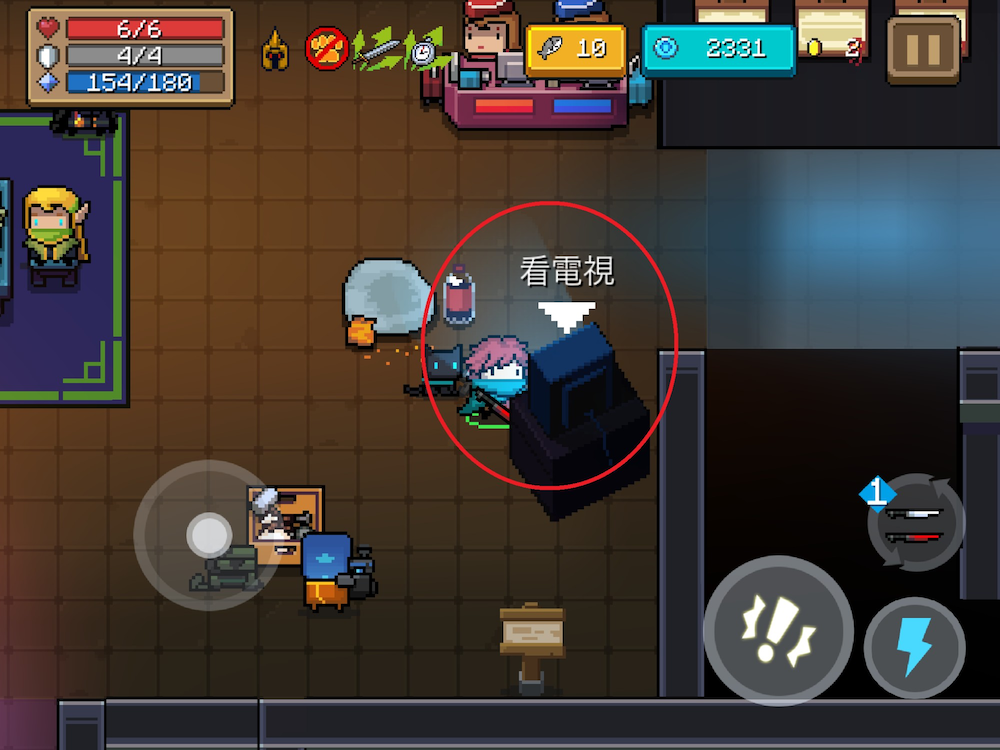
Since the single-player gameplay and roguelike mechanics generally set limits to effective IAP monetization, Soul Knight also relies quite extensively on incentivized ads to create revenue. Before entering the dungeon, the player can walk over to a TV set found in the start menu house and watch a video ad to receive a high-quality weapon to use in the dungeon. The player can also find another TV set, which will give the player a small number of gold coins that can be spent inside the dungeon at vendors and vending machines selling weapons and booster items. And if the player dies in the dungeon, they can get revived once if they watch an ad instead of paying the premium currency fee. The player can also watch an ad in the main currency shop of the game to receive a small amount of premium currency, which is used, e.g., for the various permanent upgrades found in the start menu house. Finally, the player can also watch one ad per day to receive some pet treats, which are used to increase their pet’s friendship level (and upgrade the pet’s fighting ability).
Using roguelike elements to spice up special game modes
A pure-blooded roguelike game would face the risk of being too old-school, hard-core, and niche for a big budget production, although for smaller studios, this can be a viable genre choice. At the other end of the spectrum, a highly casual roguelite game like Archero may suffer from a lack of depth and replayability, meaning that gamers may be less motivated to spend money on the game in the long run, resulting typically in a very low IAP revenue per download rate. Based on our data, the average life expectancy of a roguelite game in the Chinese iOS top 200 revenue chart is roughly three months. However, there seems to be a relatively high demand for this type of gameplay, judging from the high download ranks for roguelite games. Therefore many games in China have decided to cater to the audience with either permanent or limited-time-only special game modes with roguelike mechanics or elements.
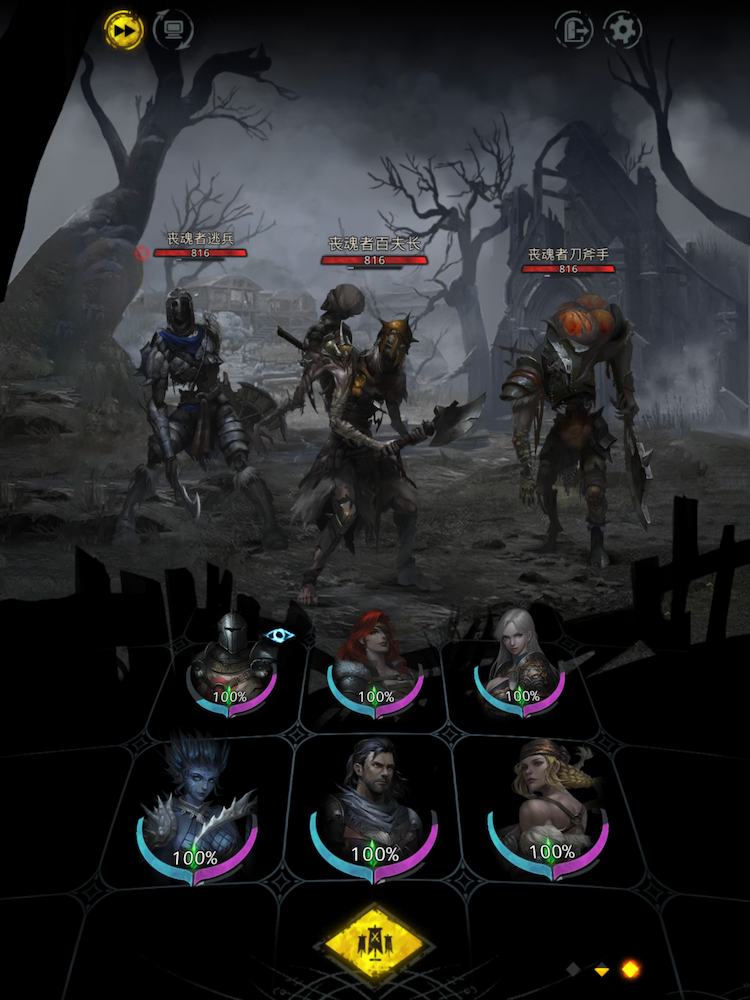
One example of taking advantage of the roguelike craze with a special PvE mode is Underground Castle 3 (地下城堡3:魂之诗), which is a dark fantasy-themed turn-based dungeon crawler auto-battle RPG, which was released in October 2021 and is still hanging in there in the iOS top-grossing 200. The main game mode of Underground Castle 3 could very well have been roguelike since the game is all about dungeon exploration. However, actual roguelike mechanics were only included in one special game mode called 秘境 (“Arcane Territory”). The core gameplay consists of linearly progressing dungeon exploration with extensive storytelling in the “text adventure” style. While exploring the dungeons, the player engages in automated battles, in which the player forms a party of six characters, which are placed on a grid, where the player can swipe the characters from the back row into the front row to activate the special skills of each character.
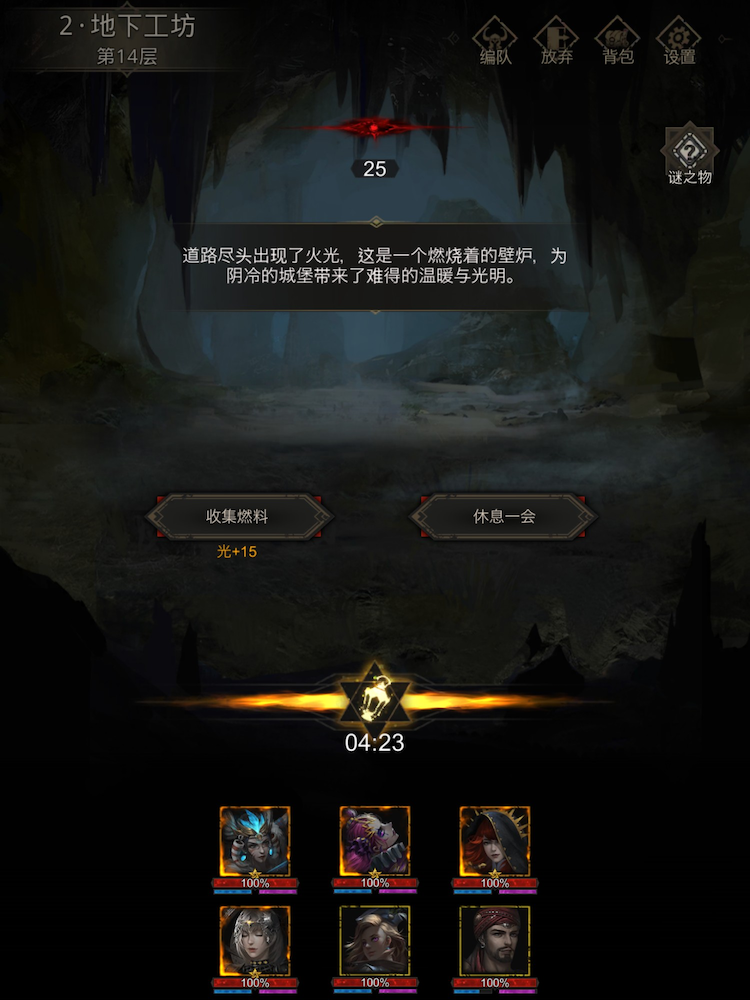
The actual roguelike game mode “Arcane Territory” is partly similar to the main game mode in the sense that there are text adventure elements and the battle mechanics are the same, but in a true roguelike style, in this mode, the dungeon is a truly randomized experience, and if the characters in your party die, that’s it. However, there is also a time limit: the player is carrying an oil lamp with limited fuel, enough to burn for five minutes. When the lamp goes out, the main boss of the dungeon will attack the player, but only if the player has completed the objectives of the dungeon. If the player defeats the boss, they can move on to the next, more difficult dungeon. Luckily, every now and then, the player will encounter a special room in the dungeon, where they can choose to either rest and recuperate or gather more fuel for the lamp to buy more time. All the content in the game mode, except the battles, is delivered in written form with choices for the player to make in each room. This is no surprise since the game proudly uses text adventure mechanics as a selling point in its promotional material.
Using roguelike mechanics in live events
Probably the easiest and least risky way to use roguelike mechanics in your game is to try it out in a non-recurring live event, and this is the way some existing top-grossing games in China have responded to the great demand for roguelike-inspired gameplay in the mobile game market.
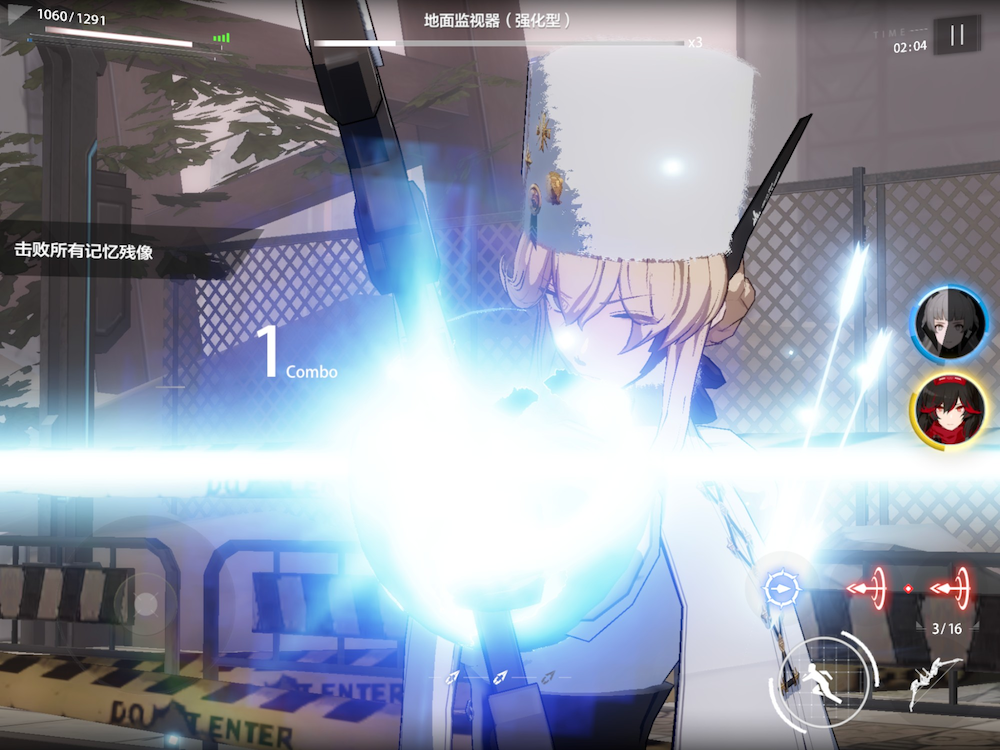
One of the games to experiment with roguelike mechanics in a limited-time event was Punishing: Gray Raven (战双帕弥什), a hack-and-slash sci-fi action RPG with a group-of-characters meta (read: anime girl collection), which has stuck to the Chinese iOS top 200 revenue chart since its release in 2019 – a rare and applaudable feat for an action RPG. Typically for an anime-style RPG, the game monetizes with gachas, and the release of a new character is always accompanied by a limited-time gacha, a special storyline, and an event game mode showcasing the new character. In November 2021, Punishing: Gray Raven deviated a little from their usual event formula and experimented with a roguelite event game mode in conjunction with the release of a new character. The event brought good results, resulting in a dramatic revenue spike as usual when a new character is released. However, the addition of the roguelite event game mode with new gameplay mechanics made the event refreshing and more memorable than if it had been yet another character release with the same old event formula.
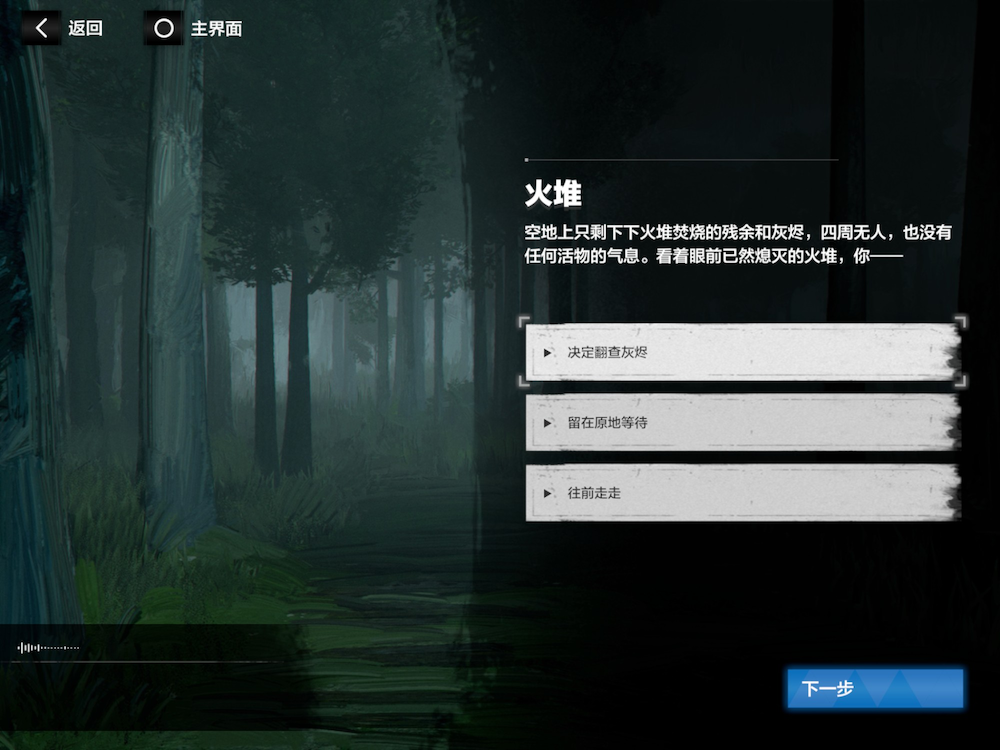
The roguelite mode was called “Recitativo di Fantasia” (宣叙妄响), and it consisted of small levels through which the player would move one by one and encounter randomized enemies or storyline events. First of all, the player could choose the difficulty of the “dungeon,” starting from “beginner,” with a new difficulty level being unlocked every time the player managed to finish the dungeon. Greater difficulties would yield more rewards, such as event currency. Each time the player had a go at the dungeon, they would also encounter random events that would carry the storyline forward. These storyline events would also include player choices that could affect the progression of the story. If the player failed to pass a level, they had a limited number of retries at their disposal. If the player used a retry and still failed, the dungeon run would be aborted. The player could also encounter “buff levels,” and if the player could pass the level, they would be rewarded with a choice out of three random skills, building up to an ever-growing skill roster for the duration of that dungeon run, similar to the skill system in Archero. The event currency received as a reward for each dungeon run could be used in a specific event shop with various items for sale, including the new character introduced in this event as the ultimate prize, as well as tickets for the limited-time gacha machine with the new character inside.
Conclusion
There is a distinct demand for roguelike-inspired gameplay in the Chinese mobile games market, which repeatedly pushes games with roguelike mechanics to the top of the download charts. Game developers have responded to this demand by any means at their disposal – including releasing new, full-blown roguelite games, as we have seen still in May 2022. Releasing a roguelite game carries economic risks, though, as the single-player game mechanics inherently limit some parts of the monetization potential of the game, and we have observed that a Chinese roguelite game usually stays in the top grossing 200 chart for three months on average. The more successful roguelites have found different ways to tackle these problems, e.g., in the case of Soul Knight, with permanent progression vectors, social systems, and incentivized ads. Other games have catered to the demand by including permanent roguelike game modes or event-only game modes with roguelike mechanics. The demand for roguelike/roguelite games is likely to continue since new games are still entering the iOS top-grossing 200 (e.g., 元素方尖).
If you enjoyed reading this post, here are a few more you should definitely check out:

